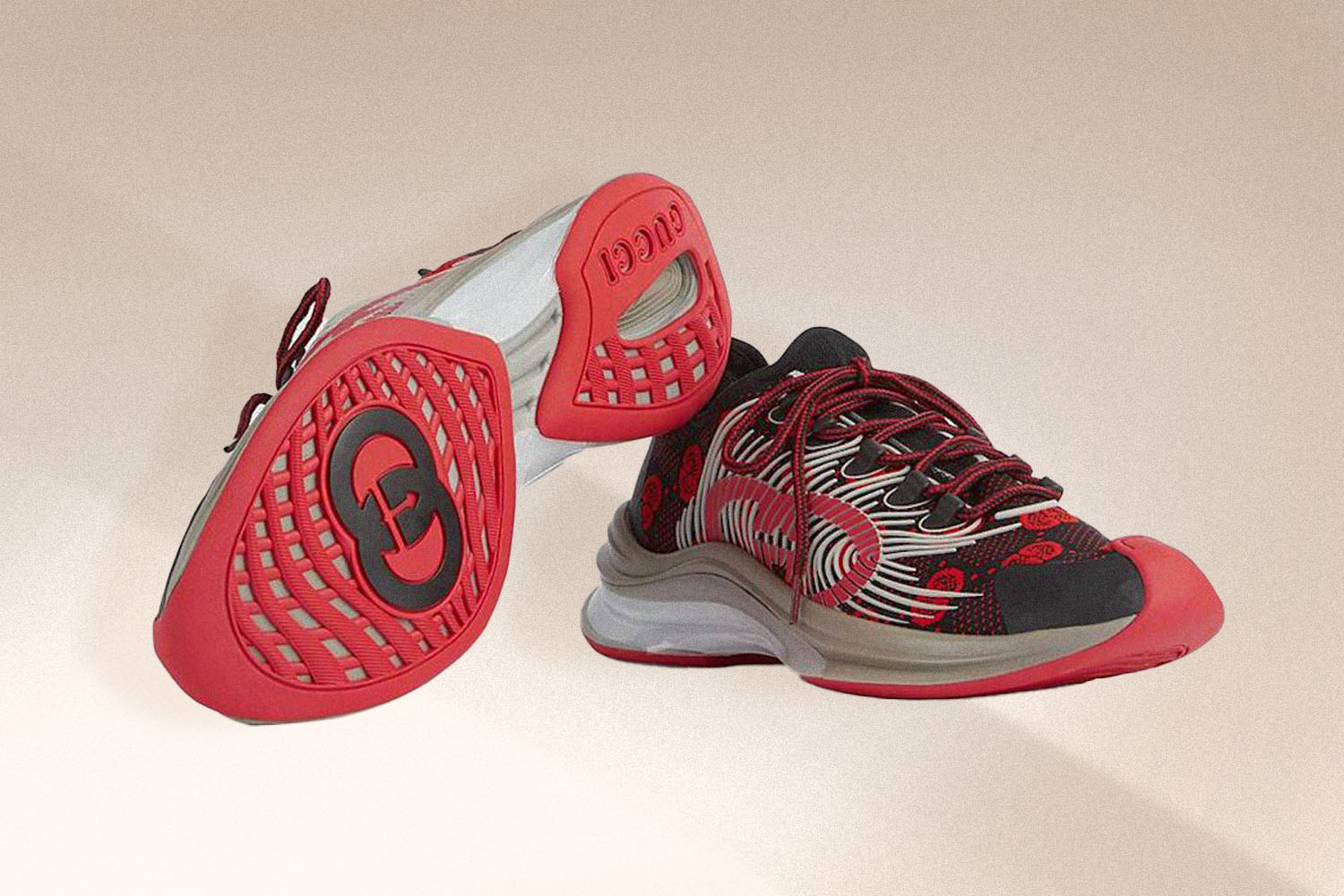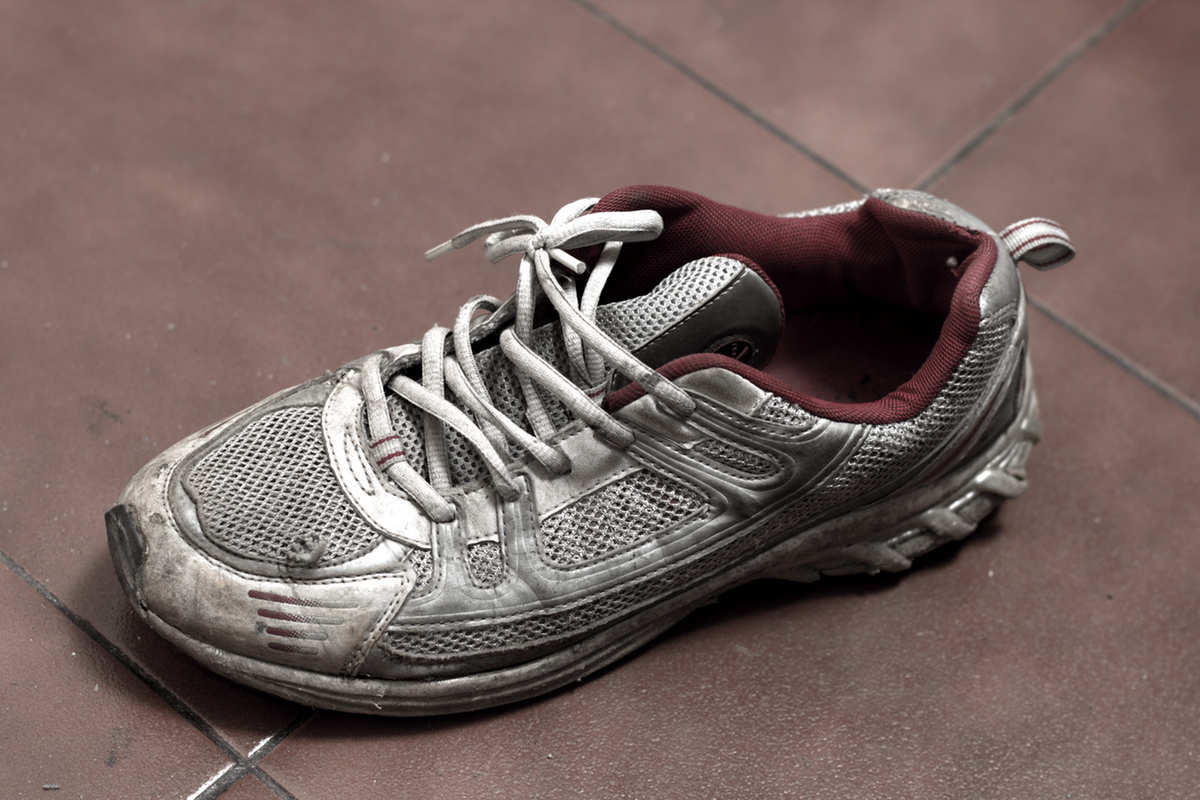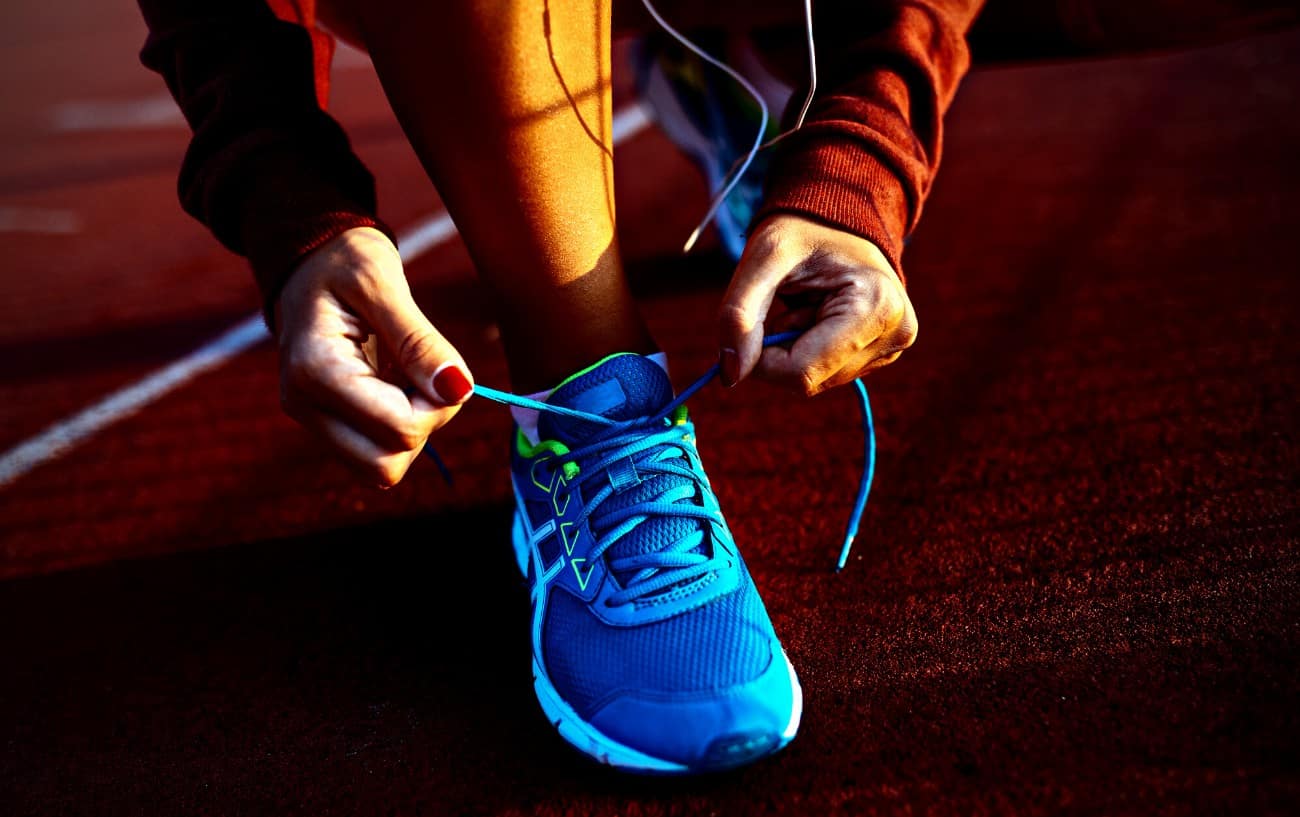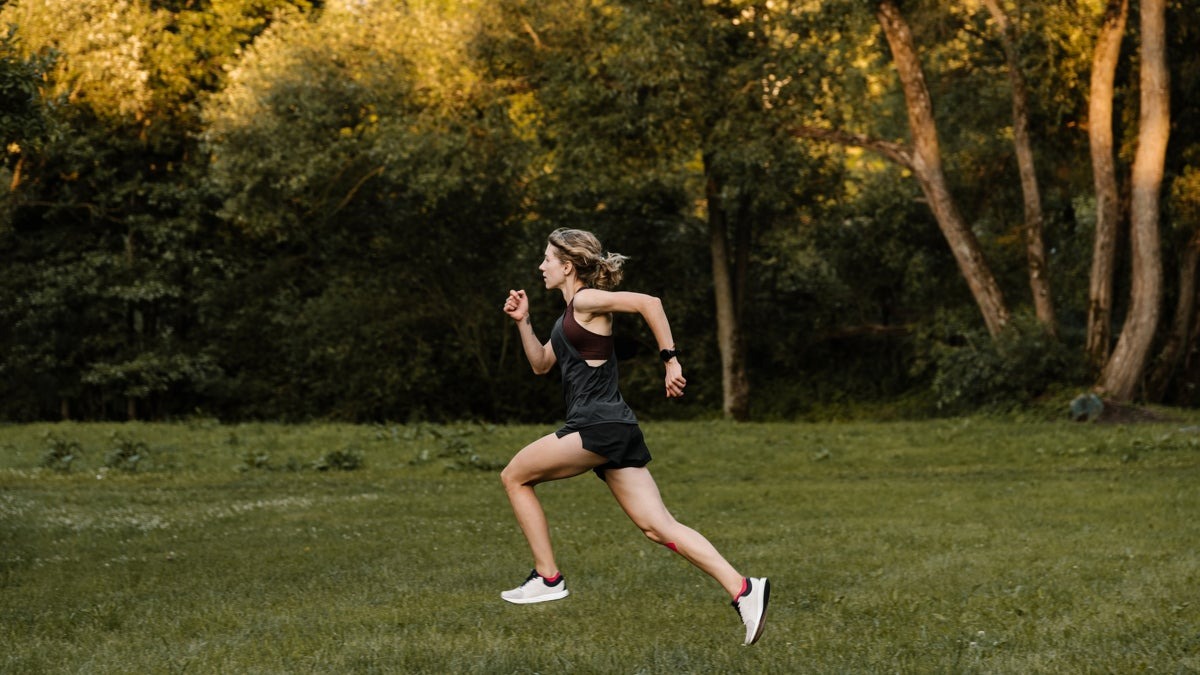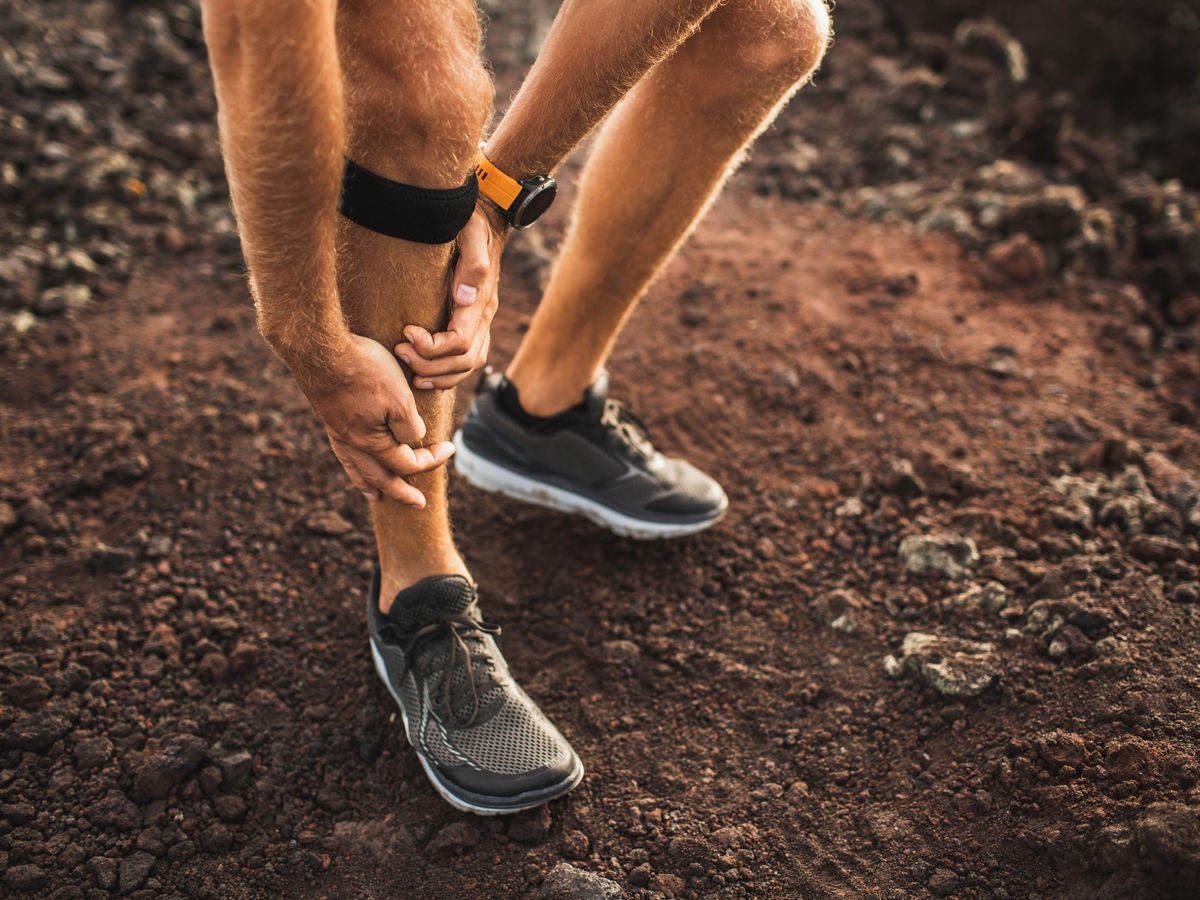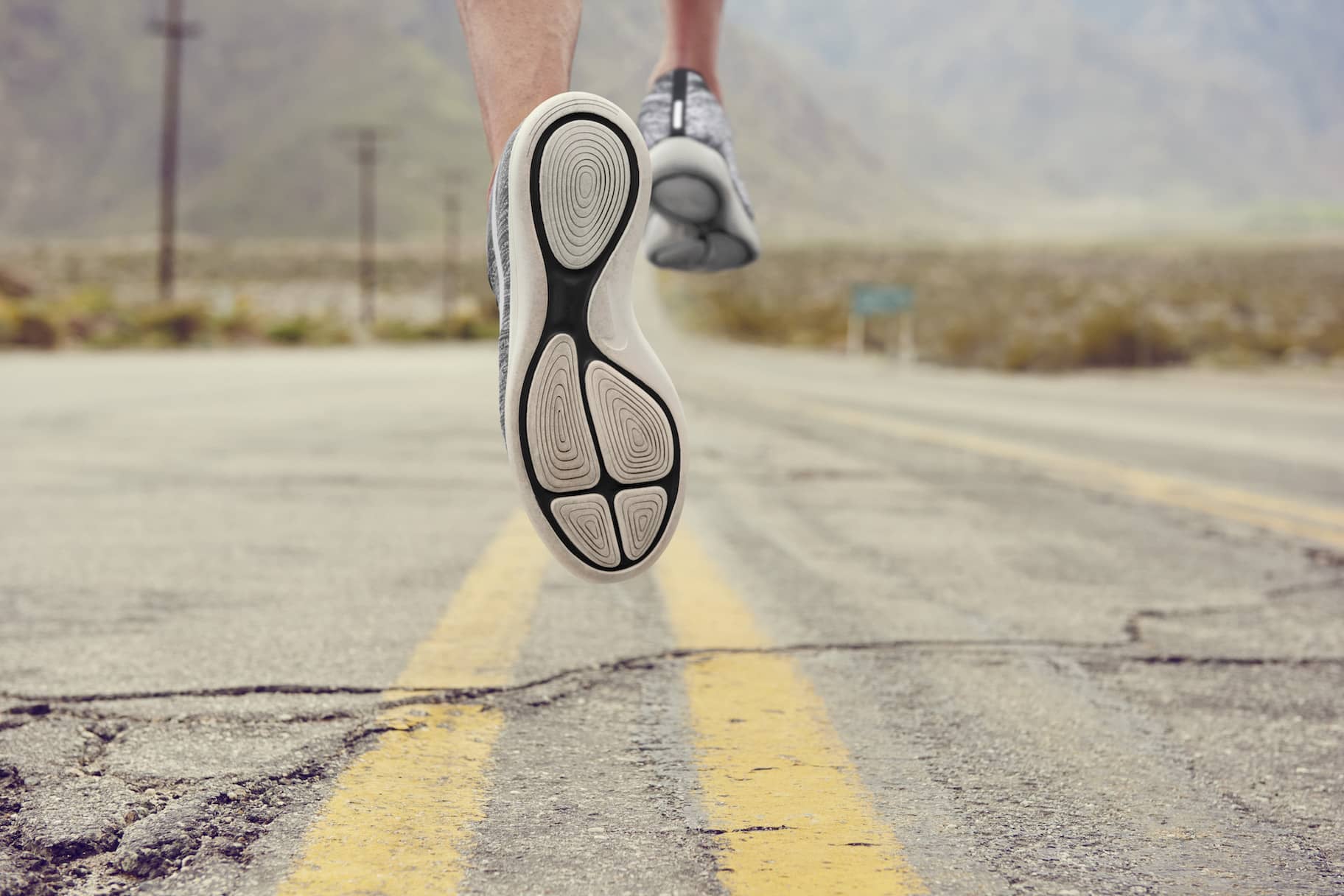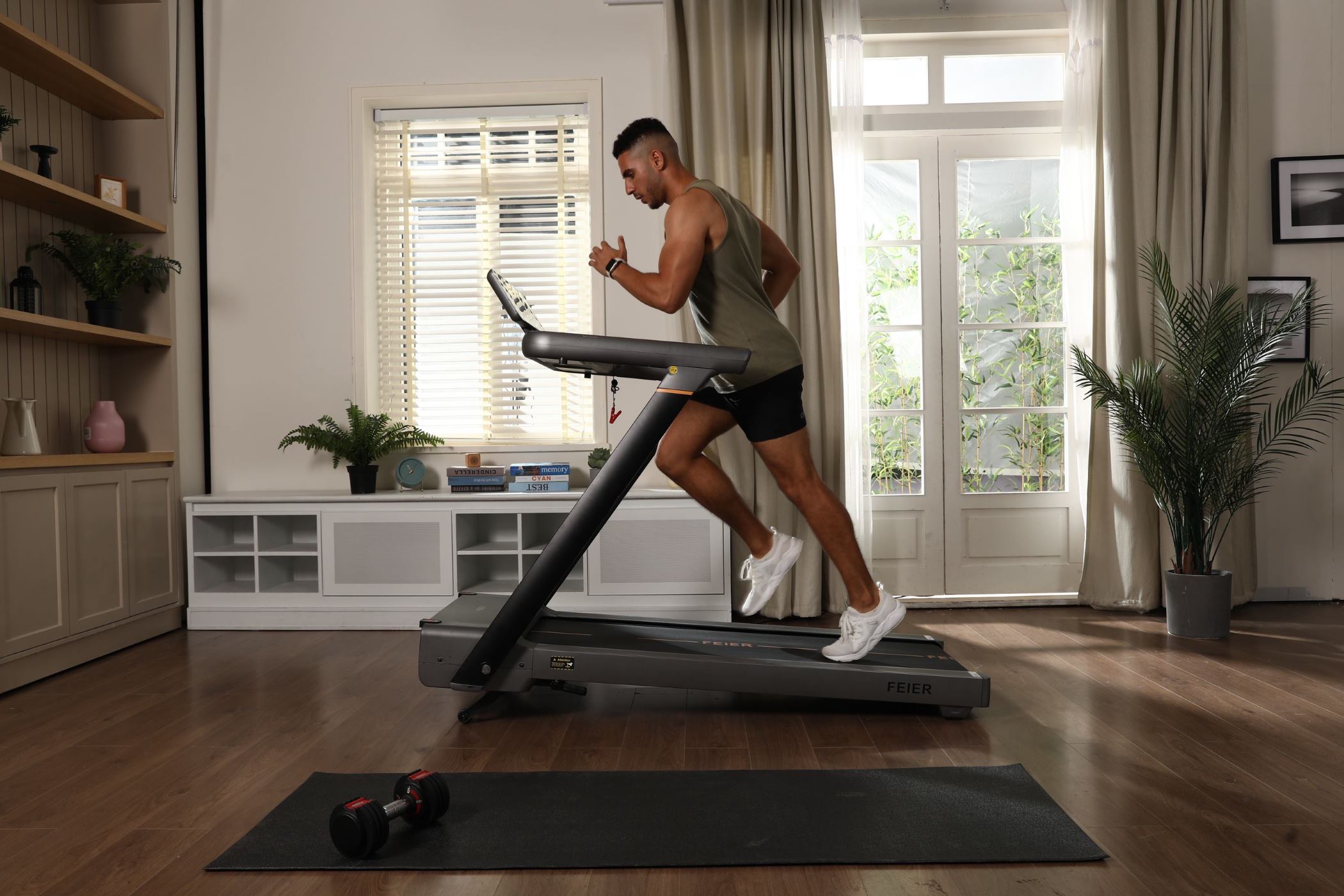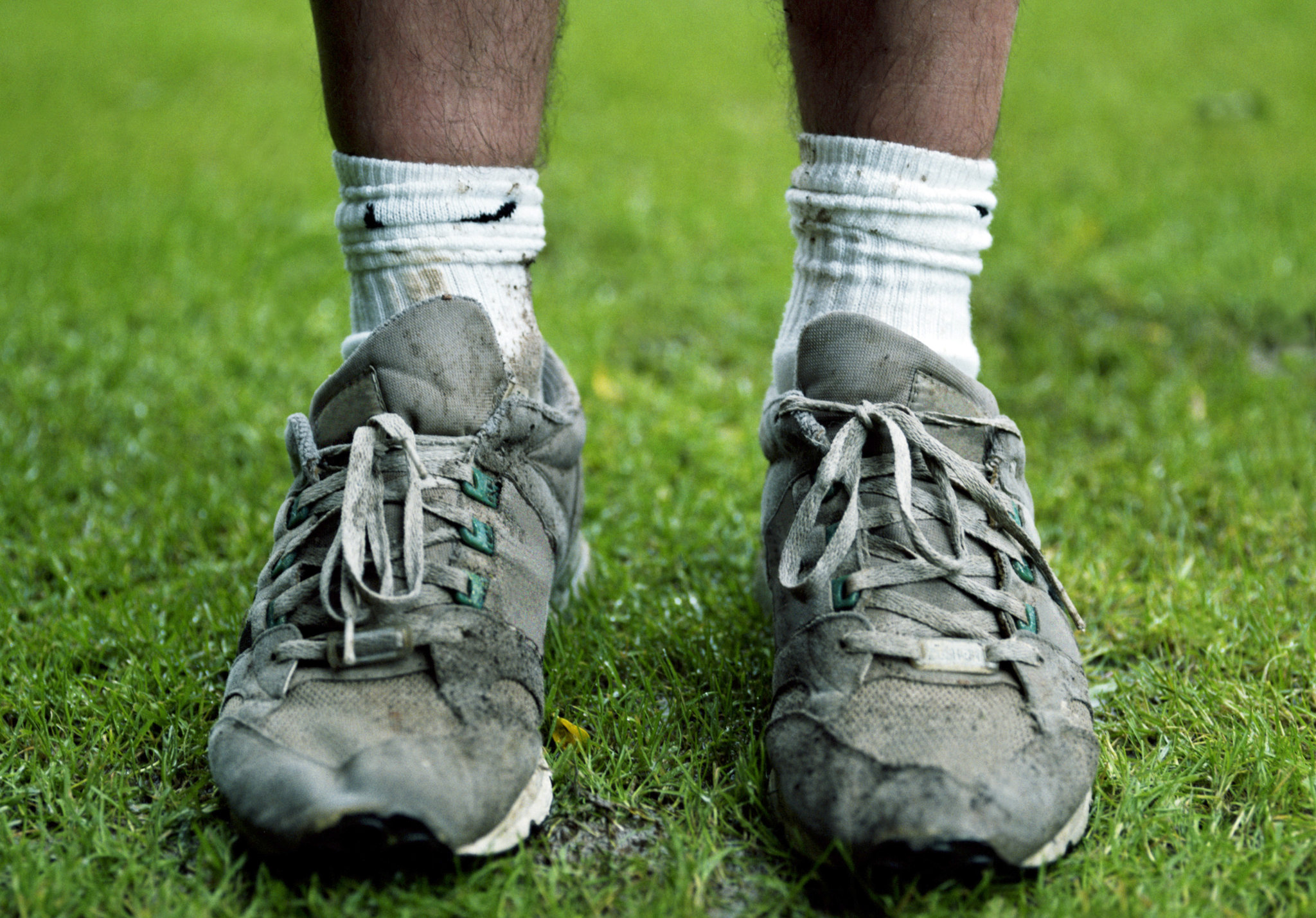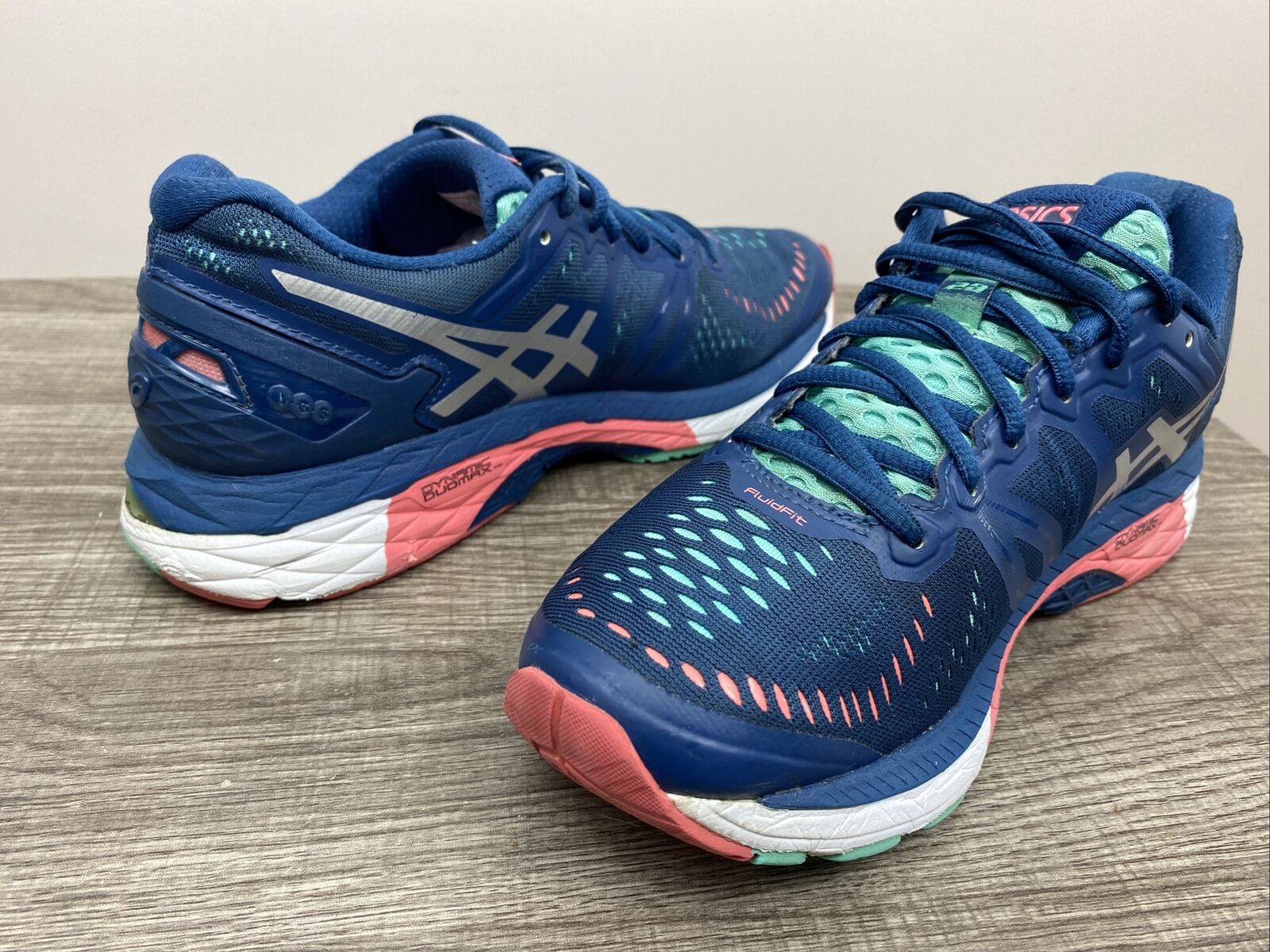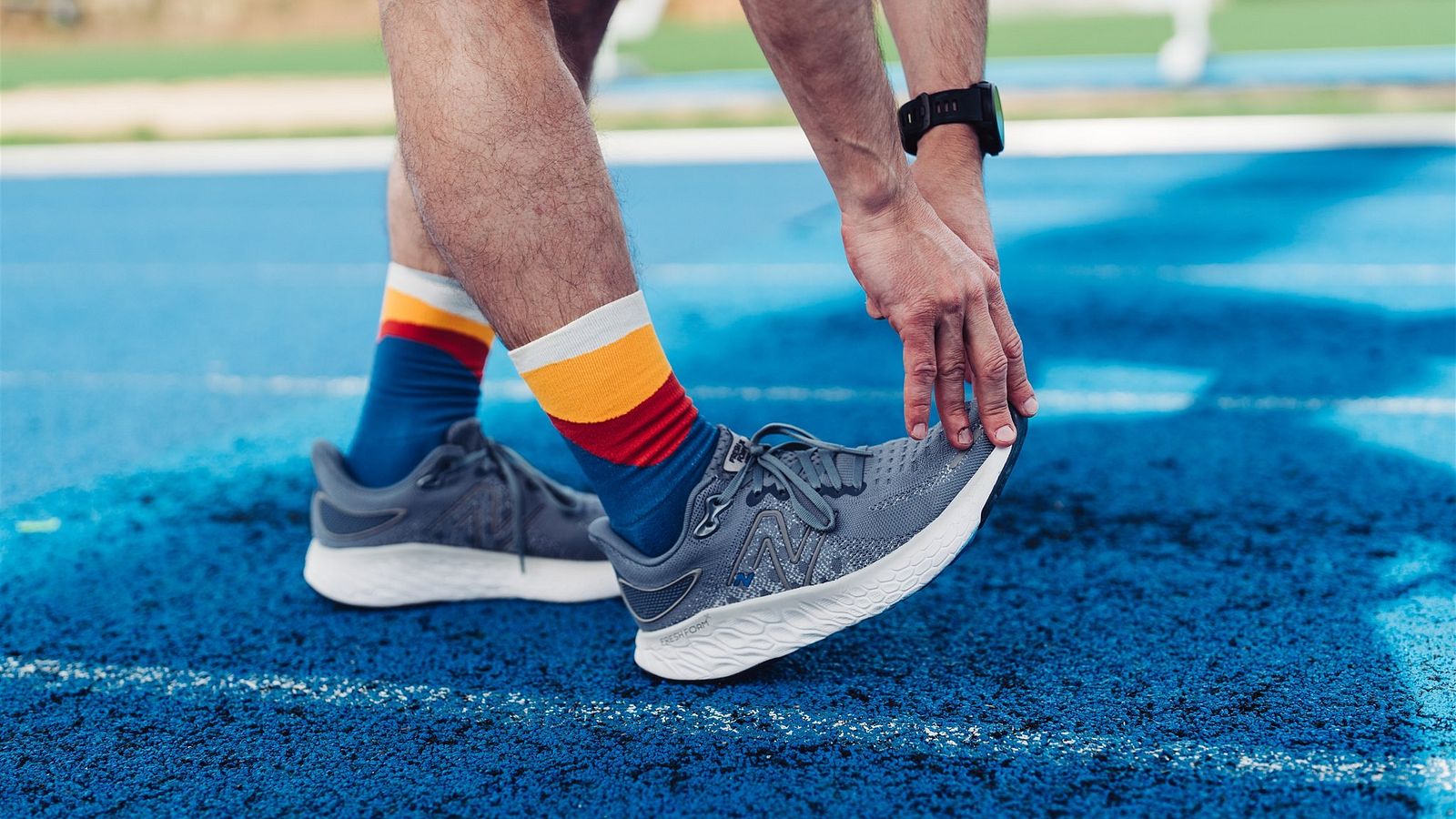

Featured
How To Stretch Out Running Shoes
Modified: May 22, 2024
Discover the best tips on how to effectively stretch out your running shoes. Check out our featured methods to ensure a comfortable and long-lasting fit.
Introduction
Properly fitting running shoes are essential for both comfort and performance. However, sometimes even the best-fitting shoes can still feel a little tight or uncomfortable, especially if you have wide feet or bunions. This is where the art of stretching out running shoes comes in. By stretching your shoes, you can alleviate discomfort and create a more customized fit that conforms to the unique shape of your feet.
Stretching out running shoes is not only beneficial for individuals with unique foot shapes, but it can also be useful for anyone who wants to prevent blisters or reduce the risk of foot injuries. It allows your feet to move more freely within the shoes and helps to alleviate pressure points that can cause pain and discomfort during long runs.
In this article, we will take a closer look at various methods for stretching out running shoes. Whether you have just bought a pair of new shoes that need some breaking in, or you have an old pair that has become a bit too snug, these methods can help you achieve a more comfortable fit.
But before we dive into the various stretching methods, it’s important to note that not all running shoes are suitable for stretching. Shoes made of certain materials, such as synthetic leather or plastic, may not respond well to stretching and could end up getting damaged. It’s always a good idea to check the specific care instructions for your shoes to ensure that they can be safely stretched.
Now that we understand the importance of stretching out running shoes and the need to choose the right shoes for stretching, let’s explore the different methods that can help us achieve a perfectly comfortable fit.
Understanding the Importance of Properly Stretching Running Shoes
Properly stretching running shoes is crucial for several reasons. Not only does it enhance comfort and reduce the risk of foot-related injuries, but it also prolongs the lifespan of the shoes. Taking the time to stretch your shoes can make a noticeable difference in your running experience.
Firstly, stretching helps to alleviate discomfort and pressure points. When running, your feet naturally swell and expand due to increased blood flow. This can cause your shoes to feel tight and constricting, leading to pain and blisters. By stretching your shoes, you create more room for your feet to breathe and move, reducing the likelihood of painful rubbing and friction.
Secondly, properly stretched shoes provide a more customized fit. Every runner’s feet are unique, and finding the perfect shoe can be challenging. However, by stretching your shoes, you can mold them to better conform to the shape of your feet. This ensures a snug, yet comfortable fit, allowing you to run with confidence and avoid unnecessary discomfort.
Stretching your shoes is particularly crucial if you have wide feet or specific foot conditions, such as bunions or hammertoes. These conditions can make finding suitable running shoes even more challenging, as standard sizes may not accommodate the necessary width or provide enough space for certain foot deformities. By stretching the shoes, you can tailor them to your specific needs, easing any pain or discomfort associated with these conditions.
Additionally, stretching can help break in new shoes. When you purchase a new pair of running shoes, they may initially feel stiff and tight. This is because the materials need time to adjust and mold to your feet. Stretching your shoes accelerates this process, allowing you to start enjoying the benefits of your new shoes sooner. It also helps prevent blisters and discomfort during the initial wear-in period.
Lastly, stretching and properly maintaining your running shoes can extend their lifespan. As with any piece of athletic equipment, regular wear and tear can cause the shoes to lose their shape and support over time. By stretching the shoes, you slow down the natural aging process, ensuring that they retain their original structure and functionality for longer.
Now that we have established the importance of properly stretching running shoes, let’s explore some effective methods that you can use to stretch your own shoes.
Methods for Stretching Running Shoes
When it comes to stretching running shoes, there are several methods you can try. Each method utilizes different techniques to expand the material and create more space inside the shoes. Depending on the type of shoes you have and your personal preference, you can choose the method that suits you best. Let’s explore some of the most effective methods for stretching running shoes:
- Using a Shoe Stretcher: A shoe stretcher is a handy tool specifically designed to stretch shoes. It consists of a wooden or plastic device that expands the length and width of the shoe. To use a shoe stretcher, insert it into the shoe and adjust the knobs or handles to apply pressure to the desired areas. Leave the stretcher in place for a few hours or overnight to allow the shoe to stretch.
- Using Thick Socks and a Hairdryer: This method involves wearing thick socks and using heat from a hairdryer to expand the shoes. Put on a pair of thick socks and then put on your running shoes. Use a hairdryer set to high heat and blow hot air around the tight areas of the shoe for a few minutes. The heat will soften the material, allowing it to stretch and mold to your feet. Continue wearing the shoes until they cool down, as this will help them retain the stretched shape.
- Freezing and Stretching Your Shoes: Freezing your shoes can help expand the material and create more room. Fill small plastic bags with water and insert them into your running shoes, ensuring they fill the tight areas. Place the shoes in the freezer and leave them overnight. As the water freezes and expands, it will stretch the shoes. Once the shoes have thawed, remove the bags, and try on the shoes to see if they have stretched to a more comfortable fit.
- Using Moisture and Newspaper: Dampen a few sheets of newspaper and crumple them into tight balls. Stuff the damp newspaper into your running shoes, focusing on the areas that feel tight. Leave the newspaper inside the shoes for 24-48 hours to allow the moisture to soften the material and reshape the shoes. Once the shoes have dried, remove the newspaper and try them on to assess the stretching results.
- Wearing Your Shoes and Walking around: Sometimes, the simplest way to stretch your running shoes is by wearing them and allowing your feet to naturally expand the material. Put on your running shoes with thick socks and walk around for extended periods. To maximize stretching, you can perform exercises that involve flexing your feet or wearing the shoes during light jogging or walking activities.
These methods can be employed individually or in combination, depending on the level of stretching needed and your personal preferences. Remember to be patient, as stretching may require multiple attempts to achieve the desired fit. Now that you have a good understanding of the different stretching methods, let’s move on to some important tips and considerations to keep in mind when stretching your running shoes.
Method 1: Using a Shoe Stretcher
A shoe stretcher is a fantastic tool for stretching running shoes. It is designed specifically to expand the length and width of shoes, creating a more comfortable fit. Here’s how you can effectively use a shoe stretcher to stretch out your running shoes:
- Start by selecting a high-quality shoe stretcher that matches the size of your shoe. Shoe stretchers come in various sizes, so be sure to choose the correct one for your shoe size.
- Ensure that your running shoes are clean and dry before inserting the shoe stretcher. This will prevent any unwanted dirt or moisture from damaging your shoes during the stretching process.
- Insert the shoe stretcher into your running shoe, making sure it reaches the toe area. Adjust the stretcher’s knobs or handles to apply gentle pressure to expand the shoe. Start with a lower level of tension and gradually increase it as needed.
- Focus on the specific areas of the shoe that feel tight or uncomfortable. For example, if the width is an issue, adjust the stretcher to expand the width of the shoe. If the length is the problem, adjust the stretcher to stretch the toe area.
- Leave the shoe stretcher in place for a few hours, or preferably overnight, to allow the shoe to stretch and mold to the desired shape. The longer you leave it in, the better the results.
- After the recommended time, carefully remove the shoe stretcher from your running shoe. Try the shoes on to see if they have stretched to a more comfortable fit. If further stretching is needed, you can repeat the process with higher tension or leave the stretcher in for a longer duration.
Using a shoe stretcher is one of the most reliable methods for stretching running shoes, as it allows you to apply controlled pressure and adjust the stretching intensity to suit your needs. However, it’s important to remember that not all shoe materials respond well to stretching. Always check the compatibility of your shoes with a shoe stretcher and refer to the manufacturer’s instructions for the best results.
Now that you know how to stretch your running shoes using a shoe stretcher, let’s explore another effective method: using thick socks and a hairdryer.
Method 2: Using Thick Socks and a Hairdryer
If you don’t have a shoe stretcher on hand, you can still effectively stretch your running shoes using a simple combination of thick socks and a hairdryer. This method utilizes heat to soften the shoe material and allow it to stretch and mold to your feet. Here’s how you can use thick socks and a hairdryer to stretch your running shoes:
- Begin by putting on a pair of thick socks. The thickness of the socks will create extra padding and space inside the shoes, facilitating the stretching process.
- Wear your running shoes with the thick socks on. Make sure the socks are positioned comfortably and not causing any unnecessary tightness.
- Set your hairdryer to its highest heat setting. Hold the hairdryer about 6-8 inches away from the areas of the shoe that feel tight or uncomfortable.
- Move the hairdryer in a back-and-forth motion, directing the heat towards the tight areas of the shoe. The heat will soften the material and make it more pliable for stretching.
- Continue blowing hot air on the tight areas for a few minutes, ensuring that the heat is evenly distributed. Be cautious not to overheat the shoes, as excessive heat may damage certain shoe materials.
- After heating the shoes, keep them on until they cool down. This will allow the shoes to retain the stretched shape. As the shoes cool, the material will contract slightly, conforming to the shape of your feet.
- Once the shoes have cooled, remove the thick socks and try on the shoes with normal athletic socks. You should notice a more comfortable fit with the added space created by the stretching process.
Using thick socks and a hairdryer is a convenient and cost-effective method for stretching running shoes. However, it’s important to exercise caution when using heat to avoid damaging the shoe material. Always use the hairdryer on the lowest heat setting that is effective for stretching and monitor the shoes closely to prevent overheating.
Now that you know how to stretch your running shoes using thick socks and a hairdryer, let’s move on to another method: freezing and stretching your shoes.
Method 3: Freezing and Stretching Your Shoes
Another effective method for stretching out your running shoes is by utilizing the power of freezing. This method involves using water to expand the material of the shoes, creating more space for a comfortable fit. Here’s how you can freeze and stretch your running shoes:
- Start by filling small plastic bags with water. Ensure that the bags are small enough to fit inside your running shoes but large enough to fill the tight areas.
- Insert the water-filled bags into your running shoes, making sure they fill the areas that feel tight or uncomfortable. Make sure the bags are secure and won’t leak or cause any damage to the shoes.
- Place the shoes in the freezer and leave them overnight or for several hours. As the water freezes, it expands and puts pressure on the walls of the shoes, stretching them in the process.
- Once the shoes have been in the freezer for the recommended time, remove them and let the ice thaw naturally. It’s important not to force the ice to melt quickly, as sudden temperature changes may cause damage to the shoes.
- Once the ice has completely melted and the shoes have returned to room temperature, remove the bags and try on the shoes. You should notice that the material has stretched, creating more space and a more comfortable fit.
- If you feel that further stretching is necessary, you can repeat the process with longer freezing times or use additional water-filled bags to target specific areas.
Freezing your shoes is a convenient and effective way to stretch them without the need for any additional tools. However, it’s important to note that this method may work better for certain shoe materials than others. It’s always a good idea to check the specific care instructions for your shoes to ensure that they can withstand the freezing process without getting damaged.
Now that you know how to stretch your running shoes by freezing them, let’s move on to another method: using moisture and newspaper.
Method 4: Using Moisture and Newspaper
If you’re looking for a simple and inexpensive method to stretch your running shoes, using moisture and newspaper can be highly effective. This method utilizes the combination of dampness and pressure to subtly stretch the material of the shoes. Here’s how you can use moisture and newspaper to stretch your running shoes:
- Begin by dampening a few sheets of newspaper with water. You want the newspaper to be slightly moist but not dripping wet.
- Crumple the damp newspaper into tight balls, ensuring that each ball is compact and won’t easily flatten out.
- Stuff the damp newspaper balls into your running shoes, focusing on the areas that feel tight or uncomfortable. To maximize stretching, make sure the shoes are packed with enough newspaper to create pressure on the material.
- Leave the newspaper inside the shoes for 24-48 hours. During this time, the moisture from the damp newspaper will soften the shoe material, making it more flexible and easier to stretch.
- After the recommended time, carefully remove the damp newspaper balls from your running shoes. Be cautious not to leave any small pieces of wet newspaper inside the shoes, as this can lead to discomfort or an unpleasant odor.
- Try on the shoes to assess the stretching results. You should notice that the material has expanded slightly, providing more space and a more comfortable fit. If further stretching is necessary, you can repeat the process with additional damp newspaper.
The great thing about using moisture and newspaper to stretch your shoes is that it’s a gentle method that works well for a variety of shoe materials. It’s a particularly effective technique for leather or fabric shoes, as they tend to respond better to moisture and pressure.
However, it’s important to be mindful of excessive moisture. If your shoes are made of delicate materials or have special finishes, it’s advisable to consult the manufacturer’s instructions or seek professional advice before attempting this method.
Now that you know how to stretch your running shoes using moisture and newspaper, let’s move on to our final method: wearing your shoes and walking around.
Method 5: Wearing Your Shoes and Walking around
One of the simplest and most straightforward methods for stretching out your running shoes is by actually wearing them and allowing your feet to naturally expand the material. This method eliminates the need for additional tools or techniques and relies on the natural movement and pressure exerted by your feet. Here’s how you can stretch your running shoes by wearing them and walking around:
- Put on your running shoes with a pair of thick socks. The thickness of the socks will add some extra padding and help create more space inside the shoes.
- Wear the shoes for extended periods, preferably during activities that involve walking or light jogging. The movement and pressure exerted by your feet will gradually stretch the shoes over time.
- Be patient and consistent with wearing your shoes. It may take several sessions of prolonged wear to notice a significant stretching effect.
- Pay attention to any areas that feel tight or uncomfortable. As you walk or jog, focus on flexing your feet and encouraging natural movement within the shoes. This will help the material stretch and mold to the shape of your feet.
- Consider performing specific foot and toe exercises to further stretch your shoes. Exercises like toe curls or foot rolls can help target specific areas and provide more stretching benefits.
- After each wearing session, assess the fit of your shoes. If you feel that they have become more comfortable and have stretched to your liking, you can continue wearing them regularly.
- If you find that the desired stretching results haven’t been achieved, you may need to combine this method with other techniques, such as using a shoe stretcher or moisture and newspaper.
This method is particularly effective for running shoes made of flexible materials like mesh or lightweight textiles. However, it may not be as effective for shoes made of stiffer materials. The key is to be consistent with wearing your shoes and giving them enough time for the material to gradually stretch and mold to your feet.
Remember to listen to your body and avoid wearing shoes that cause pain or discomfort. It’s important to find a balance between stretching and maintaining proper support for your feet during your running sessions.
Now that you know how to stretch your shoes by wearing them and walking around, let’s move on to some important tips and considerations to keep in mind throughout the stretching process.
Important Tips and Considerations
When stretching your running shoes, there are some important tips and considerations to keep in mind to ensure the best results. By following these guidelines, you can stretch your shoes effectively and minimize the risk of damaging them or compromising their performance:
- Check shoe compatibility: Not all shoe materials are suitable for stretching. Before attempting any stretching methods, check the specific care instructions for your shoes to ensure that they can withstand the stretching process without getting damaged.
- Be patient: Stretching shoes takes time and repeated attempts. Be patient and allow the stretching process to gradually take effect. Rushing or applying excessive force can lead to irreparable damage.
- Avoid excessive heat: If using heat to stretch your shoes, such as with a hairdryer, use the lowest heat setting that is effective and maintain a safe distance from the shoes. Excessive heat can cause the material to warp, melt, or lose its shape.
- Follow instructions: Different stretching methods may have specific instructions and duration recommendations. It’s important to follow these instructions carefully to achieve the best results without causing any harm to your shoes.
- Monitor the stretching process: Regularly assess the fit of your shoes as you stretch them. If you notice any signs of damage, discomfort, or excessive stretching, adjust the method or seek professional advice.
- Combine different methods: You may need to combine multiple stretching methods to achieve the desired fit. Experiment with different techniques and be open to using a combination that works best for your specific shoes and feet.
- Consider professional help: If you’re unsure or uncomfortable with stretching your shoes yourself, consider seeking help from a professional cobbler or shoe repair service. They have the expertise and specialized tools to stretch your shoes safely and effectively.
- Re-evaluate shoe fit: After stretching your shoes, reassess their fit and comfort. If they are still uncomfortable or cause pain, it may be necessary to consider getting a new pair of shoes with the proper fit.
By keeping these tips and considerations in mind, you can ensure that the stretching process is effective and does not compromise the integrity of your running shoes. Remember, the goal is to achieve a more comfortable fit that enhances your running experience.
Now that we have covered important tips and considerations, let’s wrap up this article with a quick recap of the different stretching methods we discussed.
Conclusion
Properly stretching your running shoes is crucial for achieving a comfortable and customized fit. By utilizing various stretching methods, you can alleviate discomfort, reduce the risk of foot-related injuries, and prolong the lifespan of your shoes.
In this article, we explored five effective methods for stretching running shoes. We learned about using a shoe stretcher to apply controlled pressure and expand the shoes’ length and width. We discovered how using thick socks and a hairdryer can soften the shoe material and create more space. We explored the process of freezing shoes to allow the water inside to expand and stretch the material. We discussed the use of moisture and newspaper to gently stretch the shoes and reshape them. And finally, we learned how wearing your shoes and walking around can gradually stretch and mold the material to your feet’s shape.
Throughout the stretching process, it’s important to remain patient, follow instructions, and be mindful of the compatibility of your shoes with each stretching method. It’s also advisable to seek professional help or consider replacing your shoes if stretching does not provide the desired fit and comfort.
Remember to prioritize the well-being of your feet and ensure that stretching does not cause any pain or discomfort. The goal is to enhance your running experience by creating a comfortable, customized fit that allows for optimal performance and prevents injuries.
So, whether you have wide feet, bunions, or simply want to break in new shoes, these stretching methods can help you achieve the perfect fit and maximize your running potential. Take the time to experiment with different techniques and find the method that works best for you and your shoes.
Now, it’s time to lace up your properly stretched running shoes, hit the pavement, and enjoy your next run with comfort, confidence, and style.
